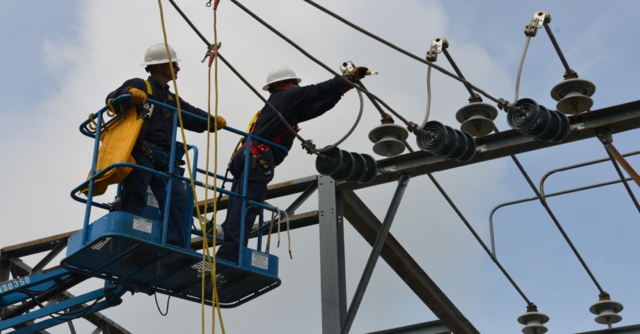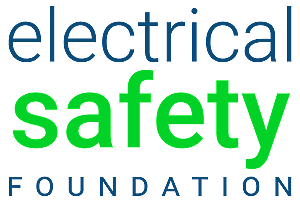The Future of Workplace Safety
How technology can improve the safety of workers on job sites
Shawn Gregg, Brett Brenner
According to the Organization for Economic Cooperation and Development (OECD), technology is expected to significantly alter more than one billion jobs by 2030. By changing how training, monitoring, and reporting are handled, workplace hazards can be identified in real time, mitigating risk and keeping employees safe. By adopting technology, you can increase your productivity while reducing your compliance risk.

Advanced workplace safety technologies
Workplace safety technologies – including personal protective equipment (PPE), fall protection, voltage detectors, and more – save lives, but are there more opportunities to protect workers from occupational injuries and fatalities? Advancements in modern technologies can improve the safety of workers by alerting staff of harmful behaviors and preventing a workplace accident before it happens. Video analytics can monitor potential trip hazards/spills and assess ergonomics, PPE compliance, and occupancy requirements. They can also detect proper adherence to standards, such as GFCI protection or cord tripping hazards. Virtual reality can be used for training purposes to provide your employees with the skills needed to handle complex tasks or emergencies. Environmental sensor technologies can be used to monitor indoor air quality, floor sweat detection, and leak detection. Robotics can be utilized to handle hazardous, difficult, or physically demanding tasks to avoid human injury and fatigue. Robots can handle tasks that were handled manually in the past, including monitoring for toxic atmosphere, conducting thermal inspections, and taking visual measurements. They can also be used to monitor worker movements to avoid mistakes leading to injury.
Wearable devices, including gloves and fault protection soft goods, have multiple injury-reducing technologies that can keep workers safe and provide immediate haptic feedback on unsafe motions. They can assist in unsafe exposures, including gas detection or high decibel sound exposure. They can identify harmful states of an individual, including heart rate or temperature levels. They can also assist in the management of expensive equipment and provide notifications for when these items must be taken out of service or inspected. These devices can be very useful for workers completing electrical work on ladders that could lead to a fall. Permanent electrical safety devices are self-powered devices that are mounted directly to equipment to detect medium or high voltage. These devices include flashing lights and noises to identify that voltage is present. They can both protect against electrical hazards as well as arc flash to alert workers of a high-voltage situation without them having to even open the electrical panel.
Safety management software can help manage your safety program, assets, and track metrics associated with your efforts. The data retrieved from the wearable devices mentioned above can be tracked in real-time to the user or back to a compliance officer. In terms of how these technologies work, most connected safety solutions require hardware to function, which needs to be calibrated appropriately to achieve optimal results. These technologies have software that tells the device how to operate and what activities to capture. All these devices are connected to another device enabled by either Wi-Fi, Bluetooth, cellular data, or satellite beacons. This connectivity is required for the device to be able to report an incident. You also need to have enough space for the data being recorded to retain/access this data. It’s also imperative that the software and hardware are compatible, operational, and security needs are met.
Benefits of new technology
The risk prevention and reduction of the above safety devices and technologies can be an invaluable tool to keeping workers safe on the job site. By utilizing devices that can replace dangerous tasks that were previously completed by humans, you can remove the risks associated with the job completely. The Electrical Safety Foundation found that five sources accounted for 92% of all electrical fatalities between 2011 and 2021. These included overhead power lines, unexpected contact with electricity, working on energized parts, ground faults, and damaged wiring. Adopting new these new technologies can allow workers and compliance officers to identify hazards and prevent any accidents from the mentioned sources and more.
This technology also can improve ergonomics and prevent bending or overreaching incidents and notifies users of the appropriate PPE to equip to comply with task requirements. This technology will greatly reduce the days spent away from work because of a workplace injury.

With advanced technology, you can look at the data captured to track the total incidents and how to train your employees to avoid those situations in the future. It is imperative that all workers, even non-electrical workers, are trained on how to conduct work safely around electricity. Between 2011 and 2021, 69% of all electrical fatalities involved non-electrical occupations. This data suggests that all workers need to be properly trained for the environments they will be working in and the work they will be conducting. Technology can be another useful tool for your organization, which can help prevent workplace injuries and fatalities.
Challenges of new technology
A major hurdle to widespread adoption of new safety technologies will be the cost involved to adapt them. As they are developed and slowly adopted by organizations, the prices will eventually come down. As typically seen with new technology, over time, the costs decrease. Depending on the provider, there may be the opportunity to rent or lease technologies or services to significantly decrease expenditures so organizations of any size can utilize these advanced safety technologies. Subscription and rental models lower the initial cost and allow smaller businesses to access these valuable tools. The costs involved with the adoption will be beneficial if your company is able to boost its productivity and profitability. These technologies can greatly reduce Occupational Safety and Health Association (OSHA) penalties, so eventually, the technology may pay for itself. As of January 2023, the OSHA maximum penalty for serious and other-than-series violations is $15,625 per violation, and the maximum penalty for willful or repeated violations is $156,259 per violation.
Additional challenges include connectivity and interoperability. Ensuring you can connect in areas without Wi-Fi or that you have enough range for connection is imperative to capture incident data and to act on preventing an unsafe action. There may be some adjustments for accurate functionality regarding interoperability between new and preexisting technology. The maintenance of all this technology also varies greatly. Some devices will require daily charging, while others require a continuous power source, updated software, and eventually hardware will need to be replaced depending on wear and tear. Security and personal data concerns also important as you want to make sure your worker’s personal data is protected.
Safety starts at the top
Ultimately, the most important factor in keeping a facility safe is support from all levels of management. Leadership must create and sustain a culture of safety if they want an injury-free, successful business. Leaders should engage and spend time in the workplace environment to fully understand the activities occurring and make changes as necessary. Many situations can lead to an unknown accident unless you experience them in person. By being present and safety driven, you can take quick action when hazards are identified. This shows your hardworking workforce that you care about their safety and allow you to develop new guidelines to protect their well-being. Consistent engagement from management working along with environmental, health, and safety staff helps to identify risks and the changes that need to be made to avoid accidents.
Keeping the safety conversation ongoing and leading by example should be a core company value. Discover new ways to educate your workers of safety updates, lessons, or best practices to further enhance your culture of safety. Being transparent about the challenges your company faces allows you to respond to hazards in a timely manner and to avoid future incidents that may occur. Reporting and analyzing issues can lead to lessons about how to prevent issues in the future. Rewarding staff engagement can help to engage your workers and encourage their active participation in safety activities. Prioritizing their involvement and training further demonstrates your company’s commitment to safety. For more information about the Electrical Safety Foundation and the future of workplace safety, visit esfi.org, and for more information about Wesco International, visit wesco.com.
Brett Brenner is the president of the Electrical Safety Foundation, the premier non-profit organization dedicated exclusively to promoting electrical safety at home and in the workplace. Over the past 16 years, Brenner has developed aggressive marketing and awareness campaigns to advance electrical safety. Such accesses have established the Electrical Safety Foundation as the primary source for unbiased electrical safety information to reduce electrically related deaths, injuries, and property losses. Additionally, he is a graduate of Radford University and is active in many professional organizations promoting public safety, including the National Fire Protection Association’s Educational Messages Advisory Council.
Shawn Gregg is the vice president of global safety at Wesco. Gregg started his career as a safety engineer and has spent much of his 30-year career working to create safer environments by producing and delivering safety solutions to keep workers safe. He joined Wesco in 2023 and holds deep experience in key end markets, industry knowledge, and technical expertise in the industrial safety industry.





